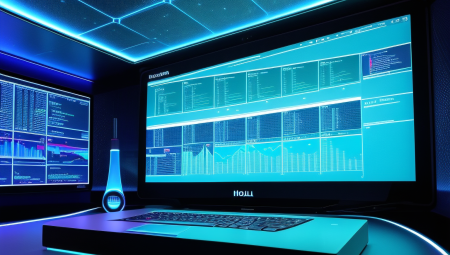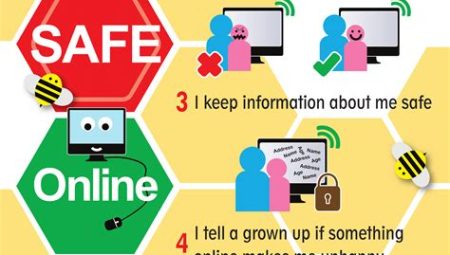In today’s rapidly evolving world, healthcare technologies have made significant strides in improving patient care and saving lives. From remote areas with limited access to medical facilities to advanced hospitals in urban centers, these innovations are transforming the way healthcare is delivered and received. In this blog post, we will explore the latest health technologies that are revolutionizing patient care and enhancing the overall healthcare experience. From telemedicine and wearable devices to artificial intelligence and robot-assisted surgery, these advancements are not only bridging the gap in remote areas but also providing personalized medical insights and precise treatment options. Furthermore, we will delve into the impact of virtual reality, IoT in healthcare, genetic testing, nanotechnology for drug delivery, big data analytics, and health apps in empowering individuals to take charge of their own health. Join us as we delve into the world of health technologies and their transformative effects on the healthcare industry.
Table of Contents
Telemedicine: Bridging the Gap in Remote Areas
In today’s digital age, telemedicine is playing a crucial role in providing medical care to individuals living in remote areas. With the advancement of technology, healthcare services are now accessible to those who previously had limited to no access to specialized medical care.
Through telemedicine, patients can consult with healthcare professionals through virtual appointments, allowing them to receive medical advice and treatment without having to travel long distances to reach a clinic or hospital. This has been particularly beneficial for individuals living in remote or rural areas where healthcare facilities are scarce.
Additionally, telemedicine has also enabled healthcare providers to monitor and manage chronic conditions remotely. Patients with ongoing health issues can now receive regular check-ins and adjustments to their treatment plans without the need for frequent in-person visits, thus reducing the burden of travel and associated costs.
Furthermore, telemedicine has proven to be a vital tool in emergency situations in remote areas. Through virtual consultations, medical professionals can provide immediate guidance and support to individuals in need, potentially saving lives in circumstances where immediate medical attention is crucial.
Wearable Devices: Tracking Health in Real-Time
In today’s modern age, technology has given us the ability to track our health in real-time through the use of wearable devices. These wearable devices include smartwatches, fitness trackers, and even clothing with embedded sensors that can monitor various aspects of our physical well-being.
One of the main benefits of these devices is the convenience they provide. Instead of having to visit a healthcare professional for routine check-ups, individuals can now easily monitor their heart rate, sleep patterns, calorie intake, and exercise levels on a daily basis.
Furthermore, wearable devices also allow for early detection of potential health issues. By continuously tracking key health metrics, individuals can quickly identify any irregularities and seek medical attention before a condition becomes serious.
Overall, wearable devices are revolutionizing the way we manage our health by providing real-time data and insights that can help us make informed decisions about our well-being.
Artificial Intelligence: Personalized Medical Insights
Artificial intelligence (AI) in healthcare is revolutionizing the way medical insights are generated and personalized for individual patients. With the advancements in AI technology, healthcare providers and researchers are able to analyze vast amounts of data to identify patterns and correlations that were previously impossible to detect. This allows for a deeper understanding of each patient’s unique medical needs, leading to more personalized treatment plans and improved outcomes.
One of the key benefits of AI in healthcare is the ability to analyze complex data from various sources, including electronic health records, medical imaging, genetic information, and wearable devices. By integrating and analyzing these diverse data sets, AI can provide personalized medical insights that help healthcare providers make more informed decisions about diagnosis, treatment, and disease prevention.
Through machine learning algorithms, AI can also continuously learn and adapt to new data, providing real-time updates and personalized recommendations for patients. This enables proactive and preventive measures to be taken, ultimately improving patient outcomes and reducing healthcare costs.
Overall, artificial intelligence is transforming the healthcare industry by providing personalized medical insights that were previously unimaginable. As AI continues to advance, the potential for personalized healthcare will only grow, leading to a new era of precision medicine and improved patient care.
Robot-Assisted Surgery: Precision and Efficiency
Robot-assisted surgery is revolutionizing the field of medicine, offering a level of precision and efficiency that was previously unimaginable. The use of robotic systems allows for much smaller incisions, which results in reduced pain and faster recovery times for patients. Surgeons are able to control robotic arms with incredible accuracy, leading to improved surgical outcomes and reduced risk of complications.
Furthermore, robot-assisted surgery offers a level of consistency that is difficult to achieve with traditional surgical methods. The robotic arms can perform the same movements repeatedly, ensuring that each patient receives the same high standard of care. This consistency is particularly important in complex procedures where precision is crucial.
Another advantage of robot-assisted surgery is the ability to conduct procedures in hard-to-reach areas of the body with greater ease. The flexibility and range of motion of robotic arms allow surgeons to access areas that would be challenging or impossible to reach with traditional surgical techniques. This opens up new possibilities for treating a wide range of conditions.
In addition to the precision and efficiency of robot-assisted surgery, the technology also provides enhanced visualization for the surgeon. High-definition 3D imaging allows for a more detailed view of the surgical site, aiding in decision-making and enhancing the overall quality of the procedure.
Virtual Reality: Easing Pain and Anxiety
Virtual reality (VR) has emerged as a groundbreaking technology in the healthcare industry, offering new ways to manage pain and alleviate anxiety for patients. By immersing individuals in a simulated environment, VR has been shown to have a calming effect on the mind and body, providing a distraction from discomfort and stress.
Research has demonstrated the effectiveness of VR in reducing acute and chronic pain, particularly in settings such as hospitals and rehabilitation centers. Patients undergoing painful procedures or recovering from surgeries have reported decreased levels of pain when using VR as a form of distraction therapy.
Furthermore, VR has been utilized to address anxiety and phobias by exposing individuals to virtual scenarios that desensitize them to their fears. This form of exposure therapy can be particularly beneficial for those suffering from anxiety disorders, PTSD, and other mental health conditions.
As the technology continues to advance, the potential for virtual reality to transform the way we manage pain and anxiety in healthcare settings is significant, offering a non-pharmacological and non-invasive approach to enhancing patient well-being.
IoT in Healthcare: Enhancing Patient Monitoring
The integration of IoT in healthcare has revolutionized patient monitoring by providing real-time data on patient vitals, medication adherence, and overall wellness. IoT devices such as smartwatches, fitness trackers, and connected medical devices enable continuous monitoring of patients, allowing healthcare providers to intervene proactively in case of any abnormalities or emergencies.
Furthermore, IoT-enabled patient monitoring fosters remote patient care, allowing individuals to receive healthcare services from the comfort of their homes. This not only reduces the burden on healthcare facilities but also promotes patient autonomy and independence. Patients with chronic conditions can benefit immensely from IoT-enabled monitoring, as it provides them with the tools to manage their health effectively and stay connected with their healthcare providers.
The use of IoT in healthcare not only enhances patient monitoring but also facilitates personalized care. By collecting and analyzing data from IoT devices, healthcare professionals can gain valuable insights into each patient’s unique health status and customize treatment plans accordingly. This personalized approach to healthcare not only improves patient outcomes but also reduces healthcare costs by minimizing unnecessary tests and hospital visits.
In conclusion, the application of IoT in healthcare has significantly improved patient monitoring by providing real-time data, enabling remote care, and fostering personalized treatment. As technology continues to advance, the potential for IoT in healthcare is boundless, promising a future where individuals have greater control over their health and access to high-quality, personalized care.
Genetic Testing: Predicting and Preventing Diseases
Genetic testing has revolutionized the way we approach healthcare, providing us with invaluable insights into our DNA that can help predict and prevent a wide range of diseases. By analyzing an individual’s genetic makeup, healthcare professionals can identify potential health risks and tailor personalized prevention plans to mitigate these risks.
Through genetic testing, individuals can uncover inherited genetic mutations that may predispose them to certain diseases, such as cancer, heart disease, and diabetes. Armed with this knowledge, individuals can make proactive lifestyle changes and undergo targeted screenings to catch potential health issues at an early stage.
In addition to predicting disease susceptibility, genetic testing also plays a crucial role in preventing the transmission of genetic disorders to future generations. Couples planning to start a family can undergo genetic testing to assess their risk of passing on inherited conditions to their children, allowing them to make informed decisions and explore options such as in vitro fertilization with preimplantation genetic testing.
Furthermore, genetic testing enables healthcare providers to prescribe personalized treatment plans based on an individual’s unique genetic profile, leading to more effective and tailored healthcare interventions. With the rapid advancement of genetic testing technologies, the future holds even greater promise for preventing diseases and improving health outcomes through early detection and targeted interventions.
Nanotechnology for Drug Delivery: Targeted Treatment
Nanotechnology has revolutionized drug delivery by offering targeted treatment options for various diseases and conditions. Through the use of nanoparticles and other nanostructures, medications can be delivered directly to the site of action within the body, minimizing side effects and maximizing efficacy.
One of the key advantages of using nanotechnology for drug delivery is the ability to target specific cells or tissues within the body. This is particularly important for diseases such as cancer, where traditional treatment methods can cause widespread damage to healthy cells. With targeted drug delivery, medications can be directed to cancerous cells, minimizing damage to surrounding tissue.
Furthermore, nanotechnology allows for the modification of drug properties, such as solubility, stability, and release kinetics. This means that medications can be tailored to the specific requirements of a patient, improving overall treatment outcomes and patient comfort.
In conclusion, the use of nanotechnology for drug delivery represents a significant advancement in the field of medicine. By offering targeted treatment options and the ability to modify drug properties, nanotechnology holds great promise for the future of healthcare.
Big Data Analytics: Improving Treatment Outcomes
Big data analytics has revolutionized the way we approach healthcare by providing unparalleled insights into treatment outcomes. By analyzing large volumes of data from various sources such as electronic health records, medical imaging, and patient monitoring devices, healthcare providers can identify patterns and trends that were previously hidden. This allows for more accurate diagnoses, personalized treatment plans, and ultimately, improved patient outcomes.
Through the use of big data analytics, healthcare professionals are able to identify and predict patient risks more effectively. By considering a multitude of factors such as genetic predisposition, environmental influences, and lifestyle choices, healthcare providers can better understand the underlying causes of diseases and tailor treatment plans accordingly. This personalized approach to medicine can lead to better treatment outcomes and improved patient satisfaction.
Furthermore, big data analytics enables healthcare organizations to optimize their resource allocation and management. By analyzing data on treatment outcomes, medication efficacy, and patient experiences, hospitals and clinics can identify areas for improvement and implement changes to enhance overall quality of care. This results in more efficient operations, reduced costs, and ultimately, better treatment outcomes for patients.
Overall, big data analytics plays a crucial role in improving treatment outcomes in healthcare. By harnessing the power of large volumes of data, healthcare providers can gain valuable insights that lead to more accurate diagnoses, personalized treatment plans, and optimized resource allocation. As technology continues to advance, big data analytics will likely play an even greater role in shaping the future of healthcare and enhancing patient care.
Health Apps: Empowering Individuals in Self-Care
In today’s digital age, health apps have revolutionized the way individuals approach their own wellness and self-care. These innovative applications provide unique opportunities for people to take charge of their health in a more proactive and informed manner, ultimately empowering them to make better choices for their well-being.
With the plethora of health apps available, individuals now have access to a wide range of tools and resources at their fingertips. From calorie tracking and workout planning to mindfulness and meditation guidance, these apps offer personalized support for various aspects of health and wellness.
One of the key benefits of health apps is their ability to empower individuals to actively participate in their own self-care routines. By utilizing features such as goal setting, progress tracking, and reminders, users can stay motivated and accountable in their health goals, fostering a sense of empowerment and autonomy.
Moreover, health apps enable individuals to gain valuable insights into their health and habits through data tracking and analysis. This data-driven approach not only fosters greater self-awareness, but also provides users with evidence-based information to make informed decisions about their lifestyle and behavior.




